Tamil Wedding Dates 2025
- January 14, 2024
- tamil
Filled with vibrant colors and traditions followed over centuries, a Tamil wedding truly highlights… Read More
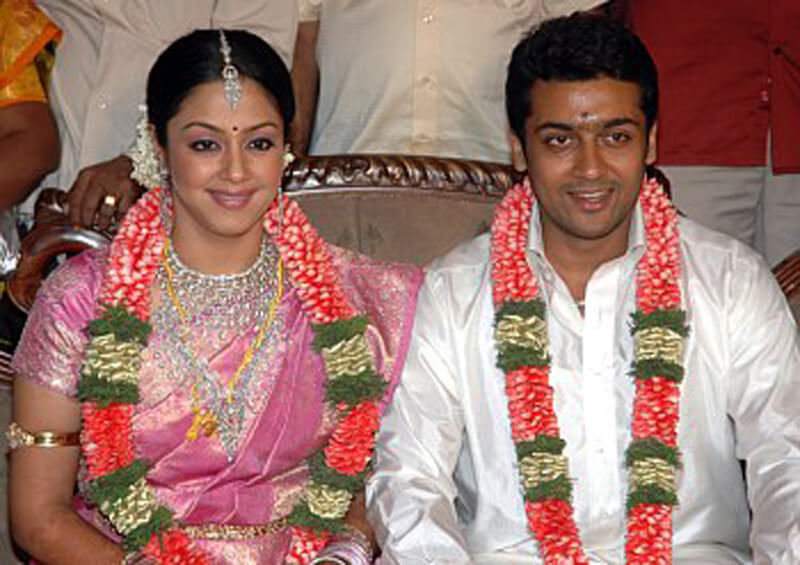
The rich and typical wedding festivities of Tamil culture are way more than a lavish and pompous affair. They represent the royal traditions and ancient heritage of South India. Though a Tamil wedding ceremony is full of several fun and light rituals, the Tamil practitioners do not compromise with the actual ceremonial values of their wedding customs, done at Tamil Nadu Destination Venues.
From the glimpse of a stunning bride in a Kanjivaram Saree to the teary-eyed moment of Kanyadaan, Tamil wedding rituals speaks volume about the meaningful union of two souls and their entire families.
Without even a single ritual, the Tamil wedding is deemed incomplete by the traditional practitioners of this sect, also they keep the auspicious dates in my mind, that can be checked from Tamil Wedding Dates 2024.
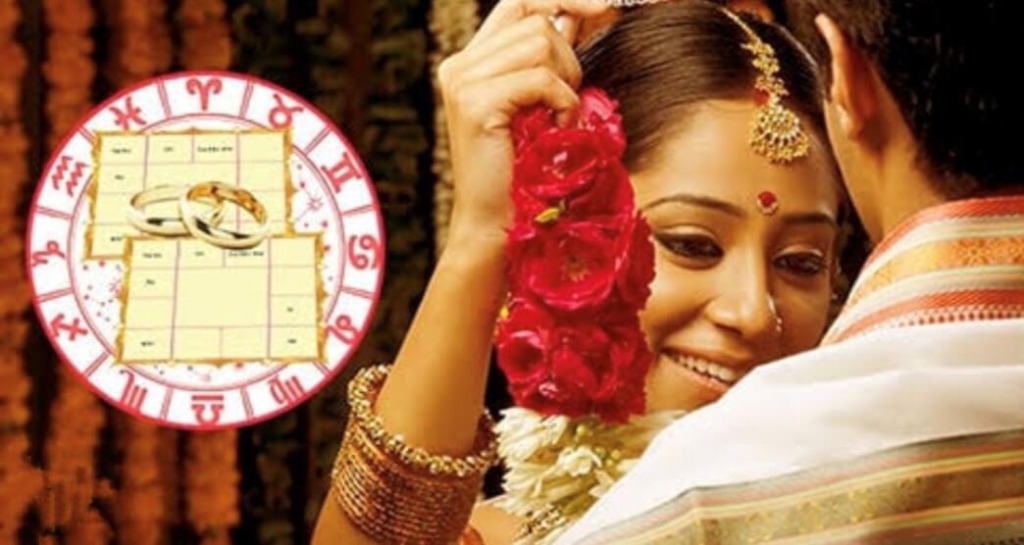
Image source: AstroVed
The very initial step of a traditional Tamil wedding is matching the Nakshatra or Horoscope according to the Vedic guidelines. This ritual includes the matching of 12 points or Poruthamas as the Naadi, Yoni, Rasi, Dina, Stree Dirgha, Vashya, Rajju, Vedha and Rashyadhipati etc. Every single Porutham signifies a unique state of a couple in distinct areas. This ritual also acts as a deciding factor of the wedding day, Tamil wedding dates and the precise muhurat of every significant Tamil wedding custom.
Agreement of the Marriage –
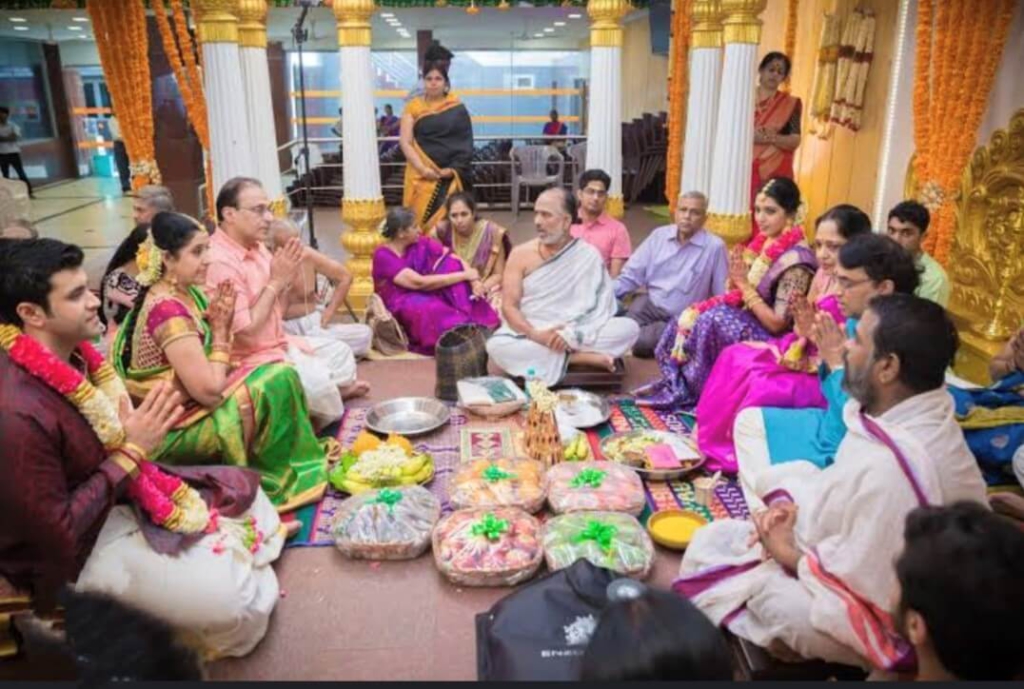
Image source: Focus Studio
Once the horoscope match is done and the marriage is fixed between the two sides, the groom’s family organizes a small gathering for exchanging the marriage agreement with other endowments. The marriage agreement is placed on a traditional tray filled with sacred banana leaves, betel nuts, betel leaves and coconut etc.
Check this also Wedding rituals in Bihar
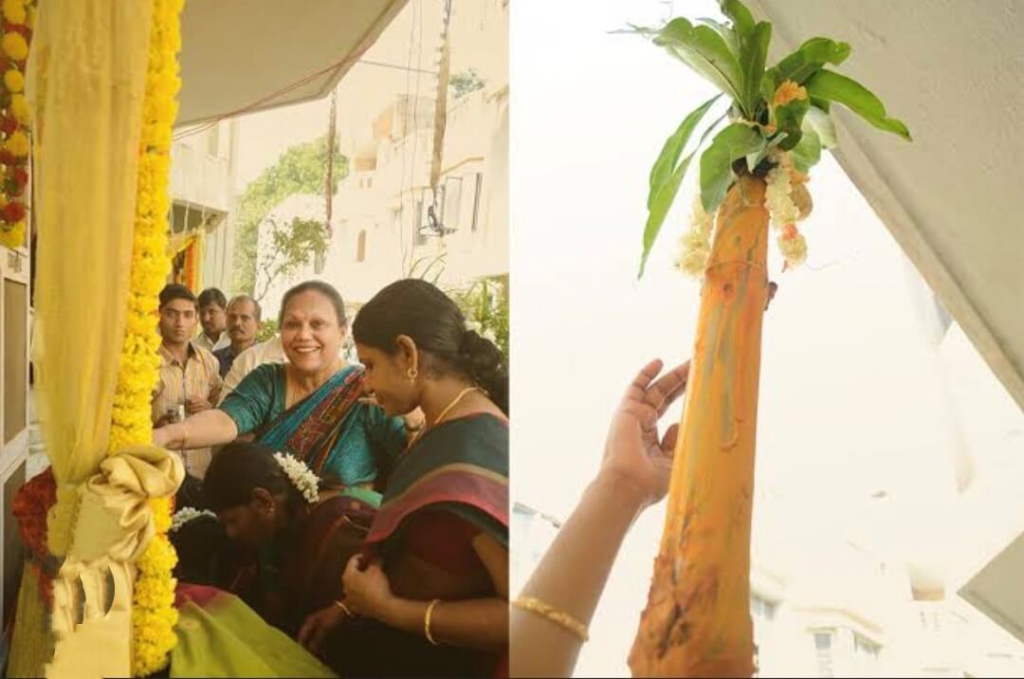
Image source: Pranaya weddings
Usually, Before a day of D-day, this ritual is performed either at a holy place or at the home of the bride or groom in the presence of both families. The bride, groom and the close family members of the couple seek the blessings of their deities so that no ill intention can obstruct the impending wedding rituals. It can be considered a prayer ritual before the Almighty.
Check this also Bengali Wedding Rituals
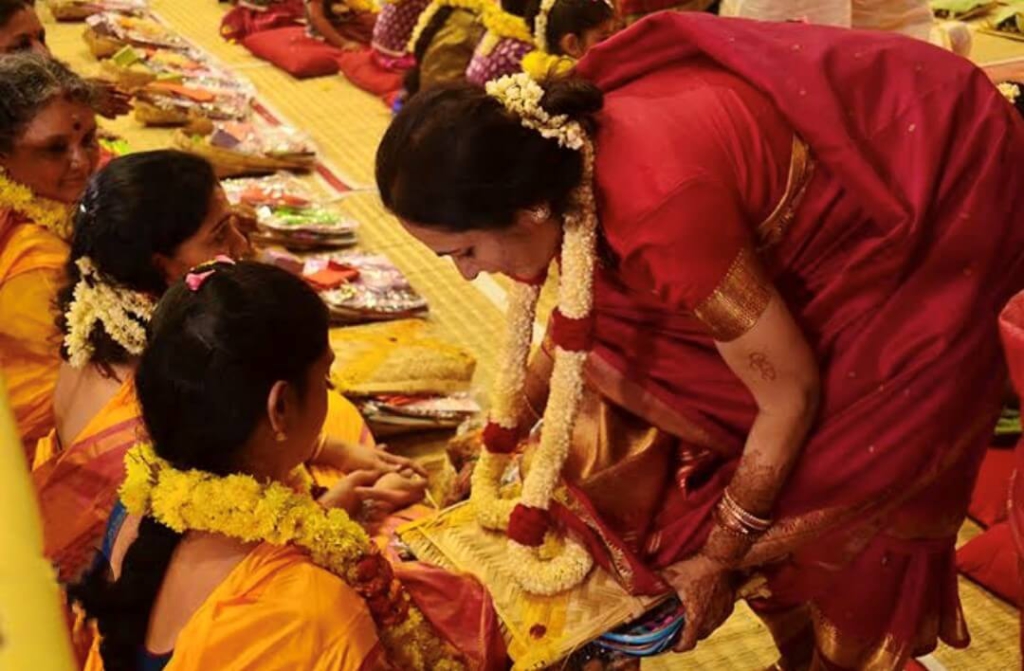
Image source: Pinterest
Sumangalis are married women of the Tamil community who belongs to the close family of the couple. This ritual takes place at the bride’s home where 3, 5 or 7 (in odd numbers) Sumangalis perform a puja and bless the bride for her wedding. These married women deck up in a traditional Madisar saree. After the completion of blessings and pooja, the Sumangalis are offered a special lunch along with some gifts like jewelry or saree etc by the bride.
Check this also Buddhist Wedding Rituals
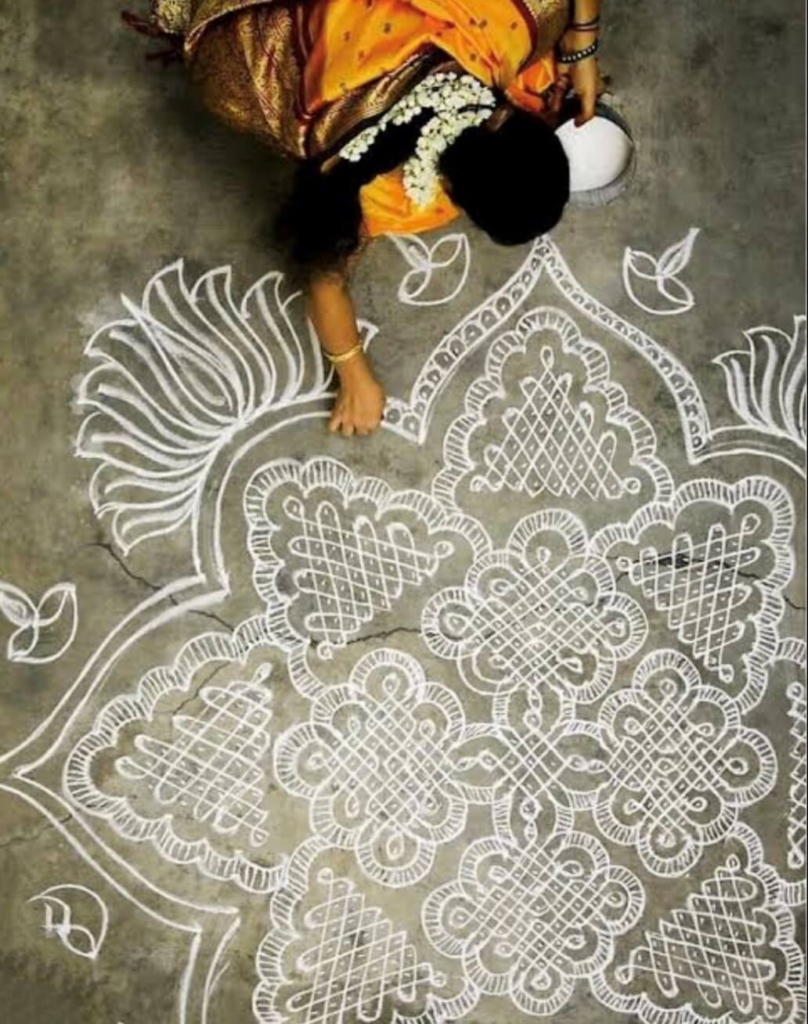
Image source: MyMandap
The five or seven married women of the family decorate the seven earthen pots with vermillion and sandalwood paste. These earthen pots are filled with nine different grains or Naivaidyam and a small amount of curd. The traditional Tamil rangoli ” Kolam” is drawn by the women at a special spot in the house. Later those seven earthen pots are submerged into a river or pond for serving the placed grains to the fish. This unique Tamil wedding ritual is known as a good luck bringer ceremony that takes place in both houses.
Check this also Nepali Wedding Rituals
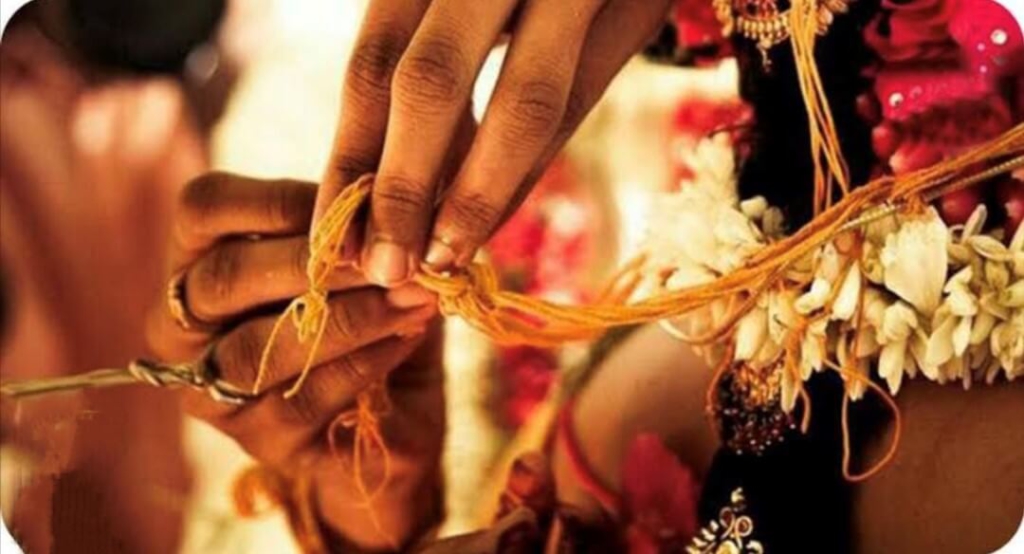
Image source: InstaAstro
On the morning of one day before the wedding day, the elder family member of the groom ties a yellow thread dipped into the turmeric on his wrist. This ritual signifies the transition of the groom from a bachelor to a family man. The sacred thread also protects him from any evil intention. The same ritual takes place in the bride’s home as well.
Check this also Pagan Wedding Rituals
This ritual occurs at the bride’s place where the entire groom’s family is welcomed along with the groom. The mother of the bride welcomes the groom by sprinkling rose water on him, applying sandalwood and vermillion tilak on his forehead and adoring him with a garland. Other family members are also welcomed by the bride’s family with sweets, coconut, betel nuts and betel leaves etc. Now the groom and his family are served the sweets prepared by his would-be mother-in-law.
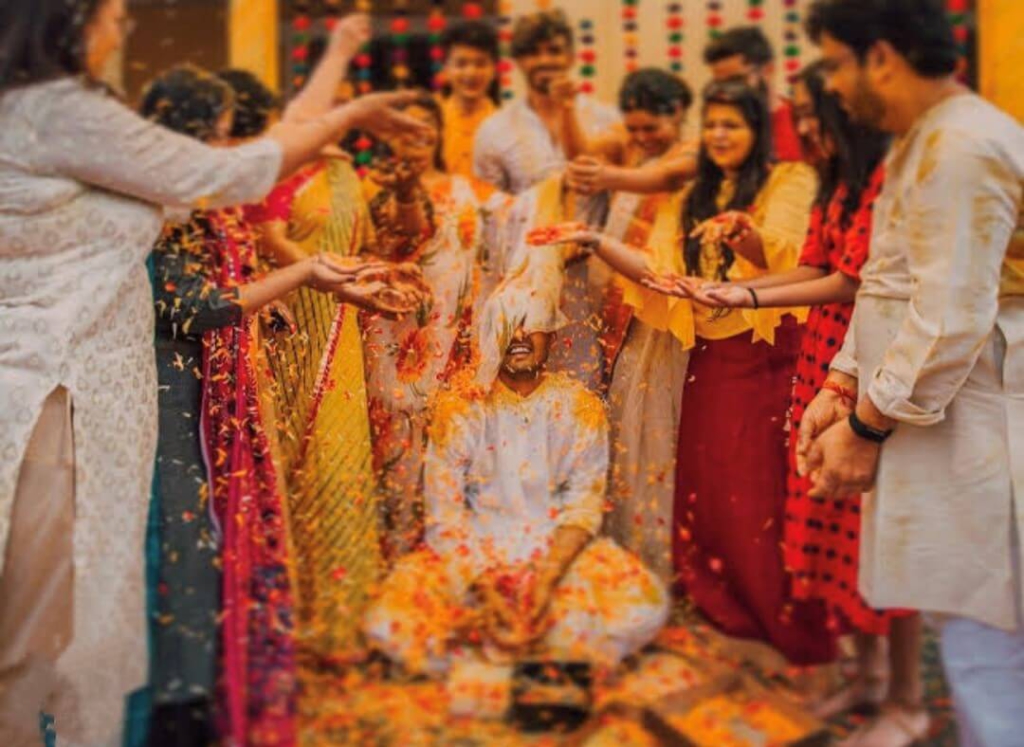
Image source: WeddingWire
After this honorable welcome, ten Brahmins are invited to feed the traditional Tamil vegetarian lunch. This ritual appeases the ancestors of both families. When the Tamil Brahmins are done with the food, they are gifted the sacred Tamil attire – Veshthi & Angavastram along with the coconut, betel leaves and betel nuts. The Brahmins shower their valuable blessings on the bride and groom as they are embarking on a new phase of life.
Check this also Chinese Wedding Rituals
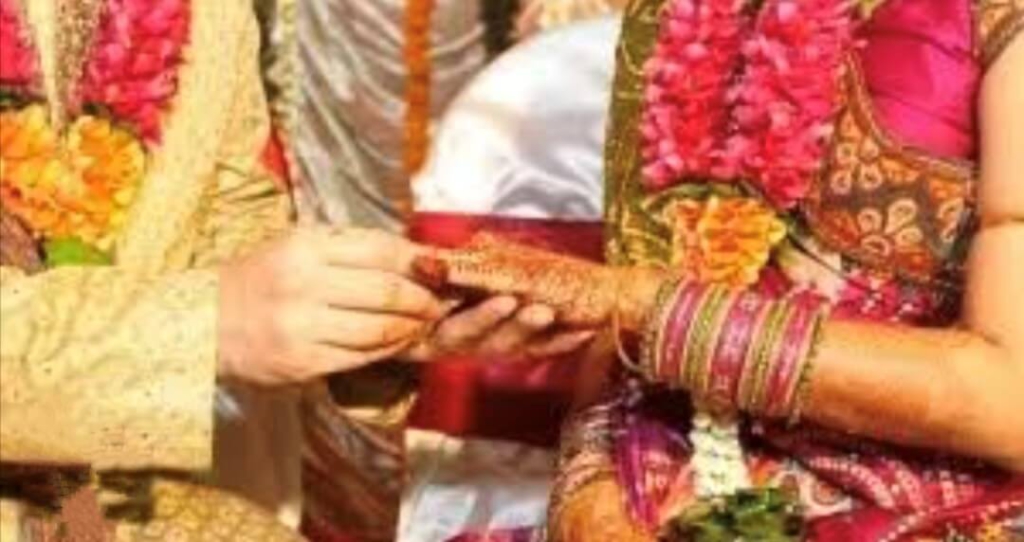
Image source: 99 Pandit
Akin to the engagement ceremony of north India, Tamil people perform Nishchayatharam at the bride’s place. First, the families take part in the Ganesh Puja and then the ceremonial customs of this ritual begin. All the Sumangalis on both sides are invited to this ritual. The groom’s family offers a beautiful saree to the bride and some gold or other jewelry. The elder female of the groom’s family puts a tilak ( Sandalwood and vermillion) on the forehead of the bride and performs her aarti. Now all the Sumangalis fill the Saree Pallu of the bride with sweets, rice, turmeric, betel nuts, betel leaves and coconuts etc. They also tie a garland around the waist of the bride. In the same way, the bride’s family also offers new clothes and jewelry to the groom. The bride and groom change their attire with the gifted new one and then exchange rings.
Check this also Mormon Wedding Rituals
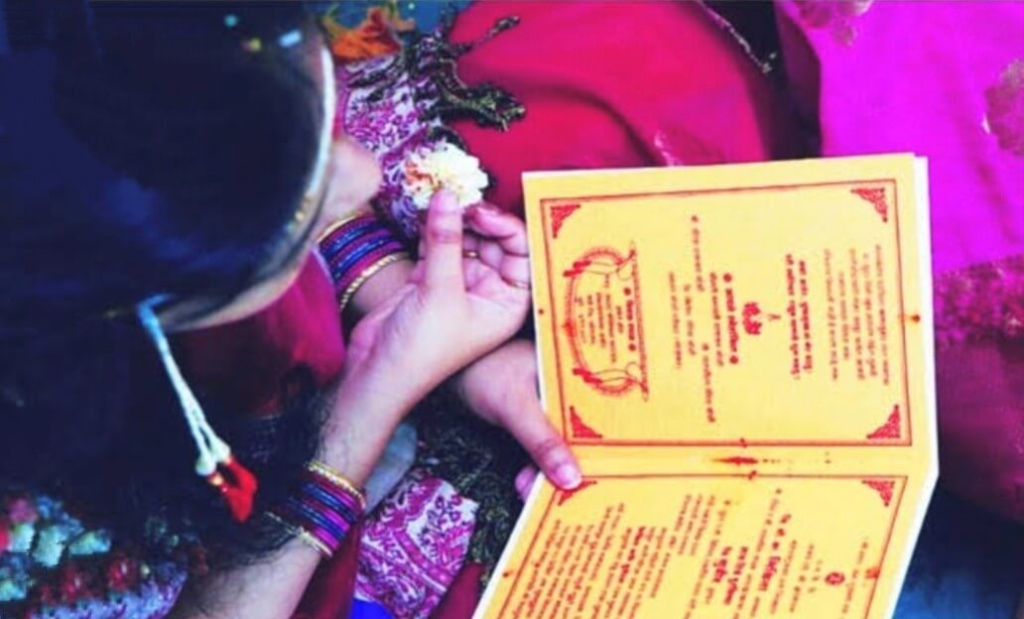
Image source: Happy Weddings
Offering a verbal invitation to each other by the bride and groom is the Lagna Patrikhai ritual. But a lot more is included in this ritual like, deciding the precise Lagna of the wedding, drafting the names of family members and relatives in it, announcing it in front of everyone by the priest and then examining of Lagna Patrika by the leading persons of both the families etc. In the end, both sides exchange some sweets and gifts also if they want to. This ritual is an official announcement of the precise time of all the important wedding rituals and a verbal invitation to each other.
Check this also Korean Wedding Rituals
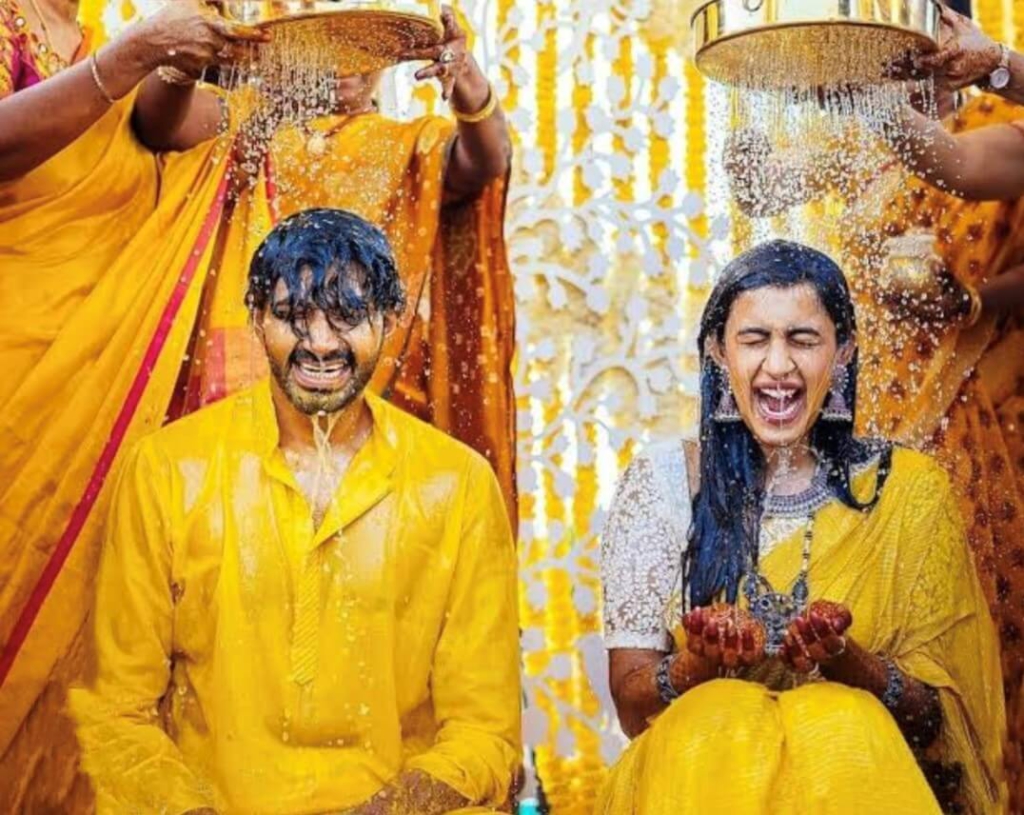
Image source: ShaadiWish
With this pious ceremony, the main wedding rituals of Tamil culture incept at the dawn of the day. MangalSnanam is performed at the bride and groom’s homes separately. All the Sumangali or married women prepare a sacred paste of turmeric, kumkum and sandalwood. First, they apply oil on the heads of the bride and groom and then apply the paste on the face, hand and other visible parts of their bodies. Once all the Sumangalis are done with their turn, the bride and groom go for a ceremonial and holy bath for cleansing their physical body as well as their souls. After the MangalSnanam, the bride and groom deck up in their wedding costumes.
Check this also Jewish Wedding Rituals
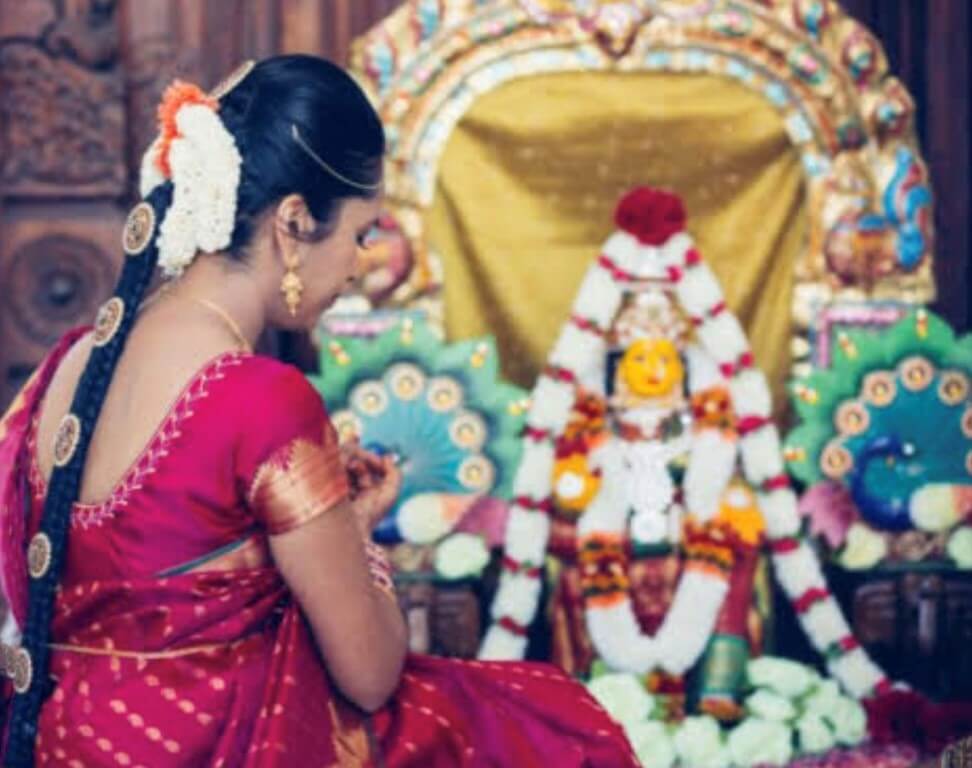
Image source: Bollywood Shaadis
A Tamil wedding starts with hailing the Ganpati bhagwan who is considered the destroyer of all the obstacles that can affect the wedding of bride and groom. After offering heartfelt prayers to Ganpati Ji, the well-dressed bride Tamil bride offers puja to Maa Gauri who is placed on a plate full of rice and Kumkum. Usually, brides worship an idol of Maa Gauri for attaining her qualities of love, nourishment and fertility for a successful married life ahead. Both families ask the priest to perform the Navagriha puja for appeasing all the nine planets of our solar system.
Check this also Iyengar Wedding Rituals
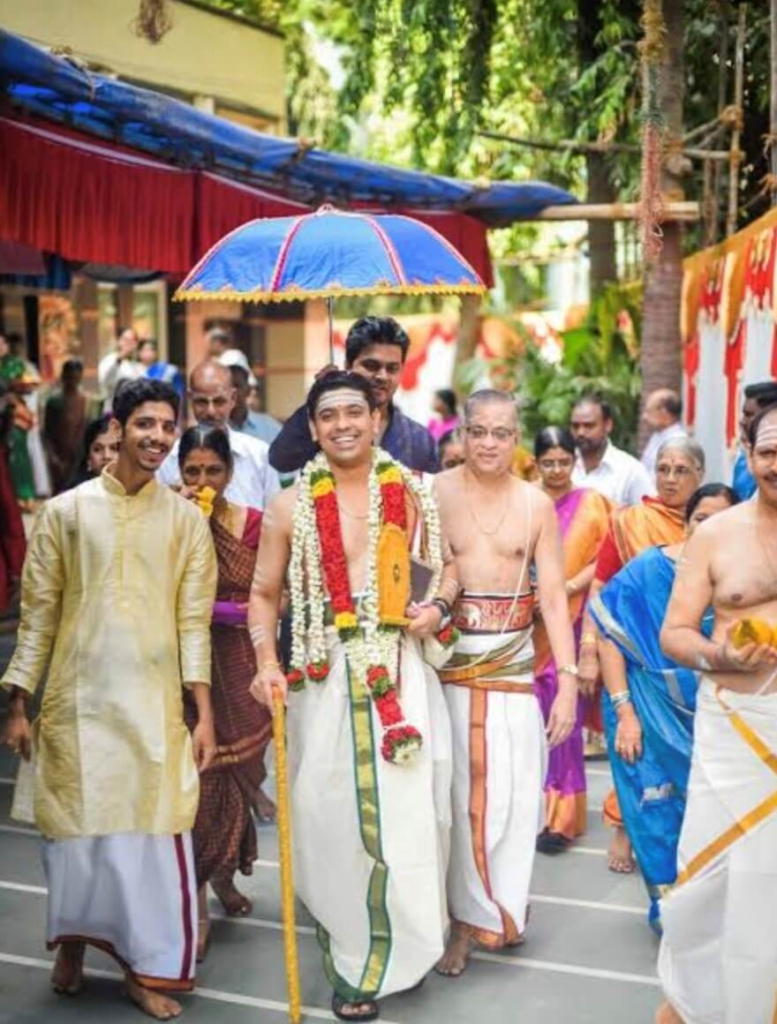
Image source: Pradakshina
Similar to the ancient Vedic period, the groom takes an umbrella, a stick and some edibles and announces his disinterest in the materialistic life or family life. He pretends to go to the Kashi (Varanasi) for a lifetime and live a life of a hermit. But then the bride’s father conveys the importance of married life and offers his daughter’s hand for marriage. The groom agrees to this proposal and returns to the sacred wedding Mandap. But he keeps the umbrella with him during the entire wedding ceremony as it reminds him of the promises he made to the father of the bride.
Check this also Kerala Wedding Rituals
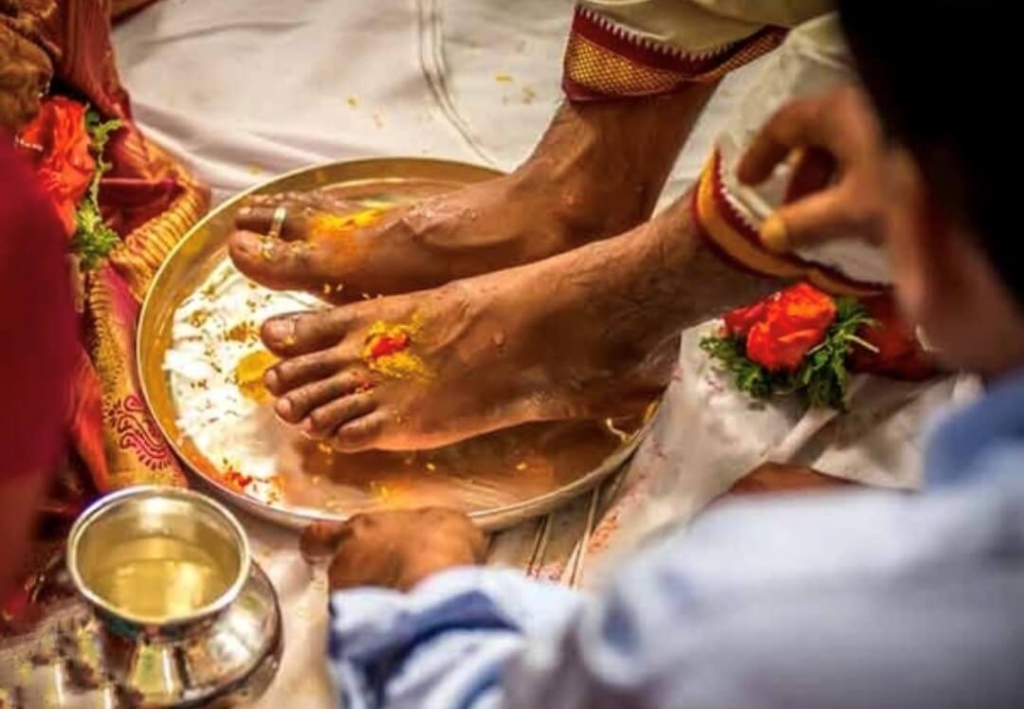
Image source: Quora
After convincing the groom to marry with hard efforts, the bride’s father takes him to the wedding Mandap and washes his feet with holy water mixed with milk, kumkum and sandalwood and wipes the feet with the floral petals. This whole ritual depicts love and reverence towards the would-be son-in-law of the bride’s family.
Check this also Kannada Wedding Rituals
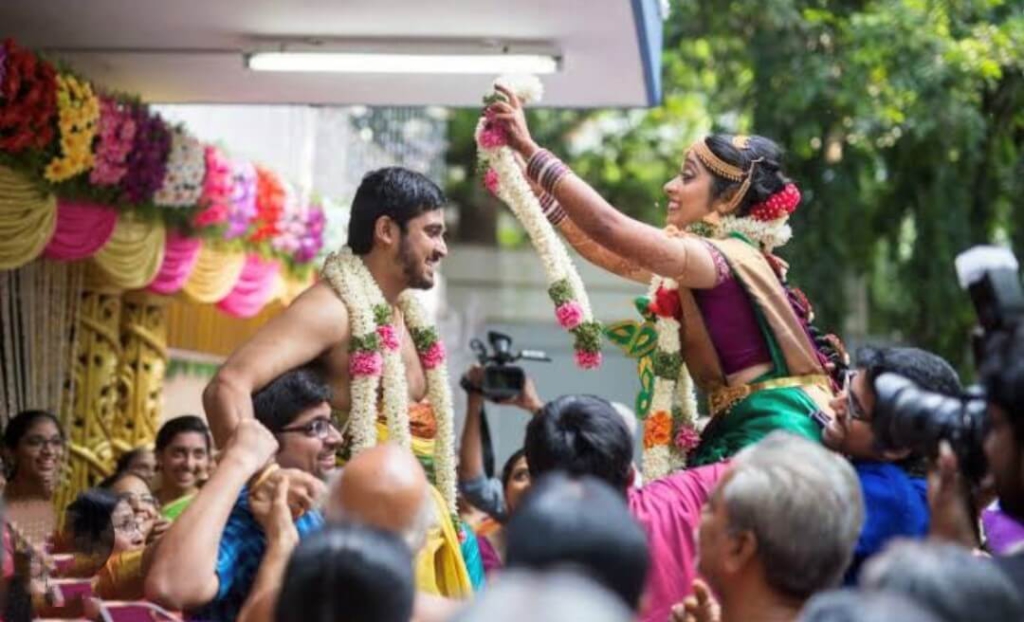
Image source: Oruphoto
The bride and groom both are present at the wedding Mandap for this ritual. Both of them exchange the exquisite garlands as the initial step of the beginning of their wedded life. This exchange takes place at least three times. The bride, Groom and other family members enjoy this moment a lot as both bride and groom try to evade the garland. The family members help them in doing so by lifting them higher. The perkiness of this distinct Tamil wedding ritual lightens up the atmosphere and draws a big curve of smiles on everyone’s face.
Check this also Hindu Wedding Rituals
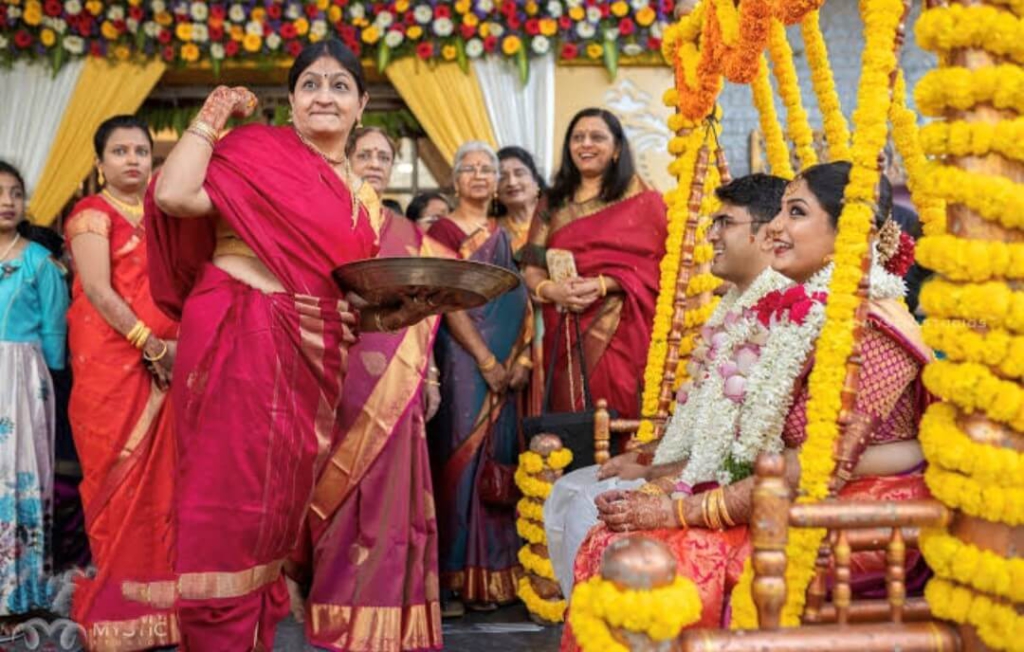
Image source: Oonjal
This Tamil wedding custom is a beautiful depiction of confronting all the bitter-sweet moments together by the married couple. Oonjal is a swing on which the bride and groom sit and it is waved gently by the women who also sing Oonjal Pattu songs. They also move around the swing. The elder members of both families feed bananas and milk to the bride and groom and bless them for stepping into a new phase. The women move around the swing in a clockwise and anti-clockwise direction hold some colorful rice balls and then throw them in cardinal directions to ward off all the evil intentions. An elder woman of the family also walks three times in a clockwise direction around the swing holding water and an earthen lamp. Sitting on the waving swing showcases the togetherness of the couple in favorable as well as unfavorable situations of the wedded life.
Check this also Baniya /Agarwal wedding rituals
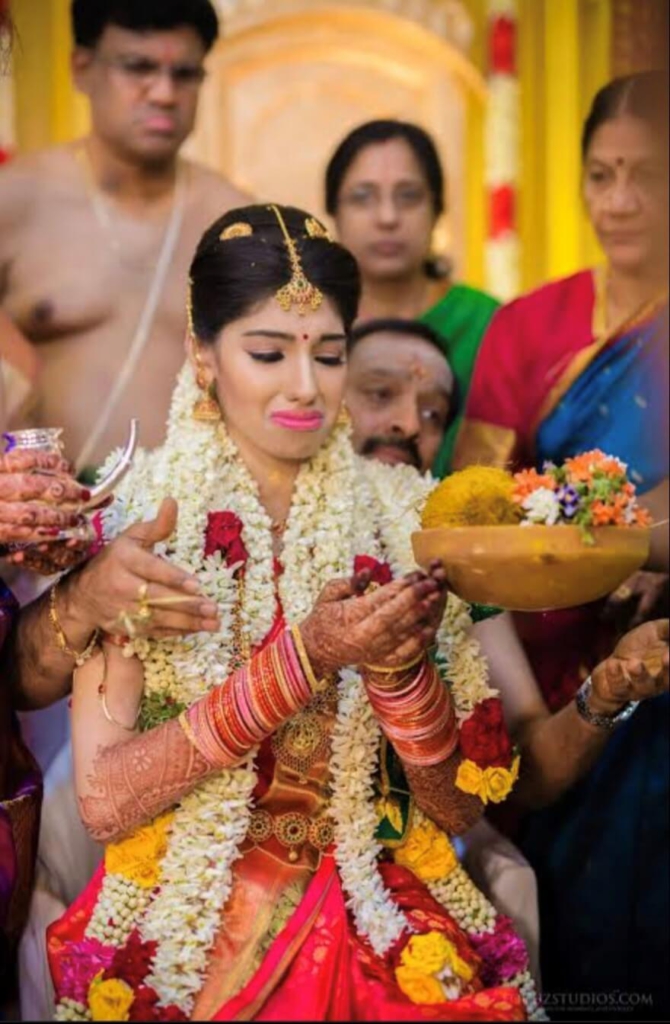
Image source: Focuz Studios
Now comes a very sentimental moment in the Tamil wedding culture when the bride and groom get off the Oonjal (Swing). The groom sits on the floor in the Mandap but the bride sits on the lap of his beloved father. This shows that the father is giving his baby daughter who played in his lap for several years to the groom. The bride’s father places the bride’s hand on the groom’s hand and supports this through his hands. The mother of the bride pours water on the coconut placed on the groom’s hand. Every attendee sheds tears as the parents are going to separate from their daughter and ask the groom to take care of her. The hands of the bride and groom are also tied with a sacred thread as a union. During this ceremony, the groom is viewed as Bhagwan Vishnu, so the mother of the bride puts Kajal in his eyes and the father washes his feet. The end of the bride’s saree is tied with the Angavastram of the groom before Kanyadanam.
Check this also Christian Wedding Rituals
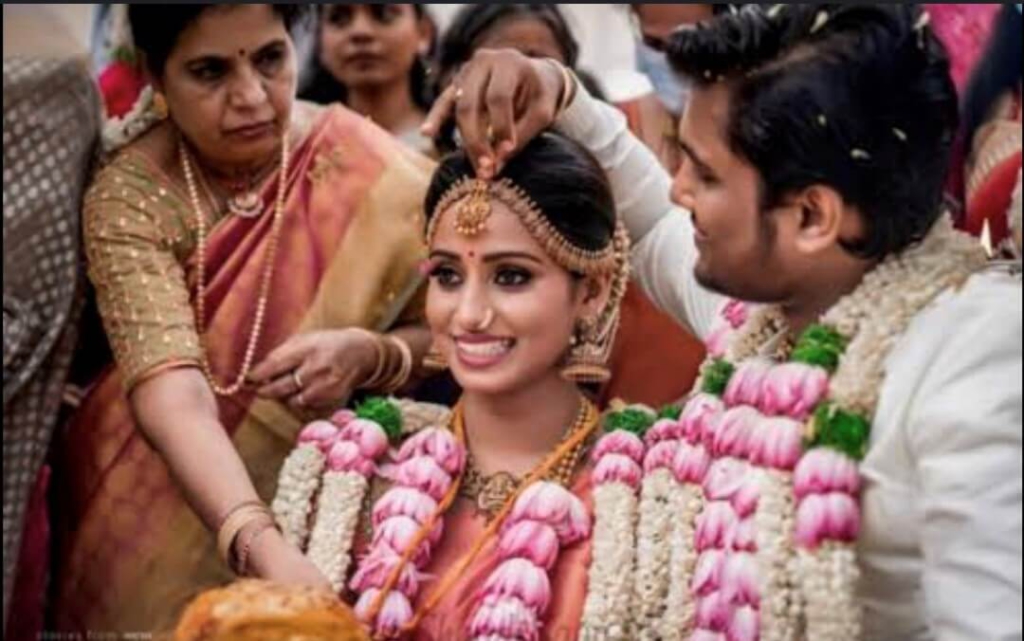
Image source: Wedding Bazaar
After the Kanyadanam ritual, the groom’s family accepts the bride as their family member and wraps a 9 yards silk saree around her shoulders. The groom fills the hair partition of the bride with vermillion. Now she goes to change her attire with the gifted saree and returns to the wedding Mandapam. A grass ring is placed on the hands of the bride and a plough yoke is placed over it. A grass belt is also tied around her waist. This shows that the couple is now ready to confront all the situations of life. “Thaali” is similar to the Mangalsutra which is tied around the neck of the bride after attaining the blessings of the priest by touching it. The first two knots are tied by the groom and the third last knot is tied by the groom’s sister of Thaali.
Check this also Jain Wedding Rituals
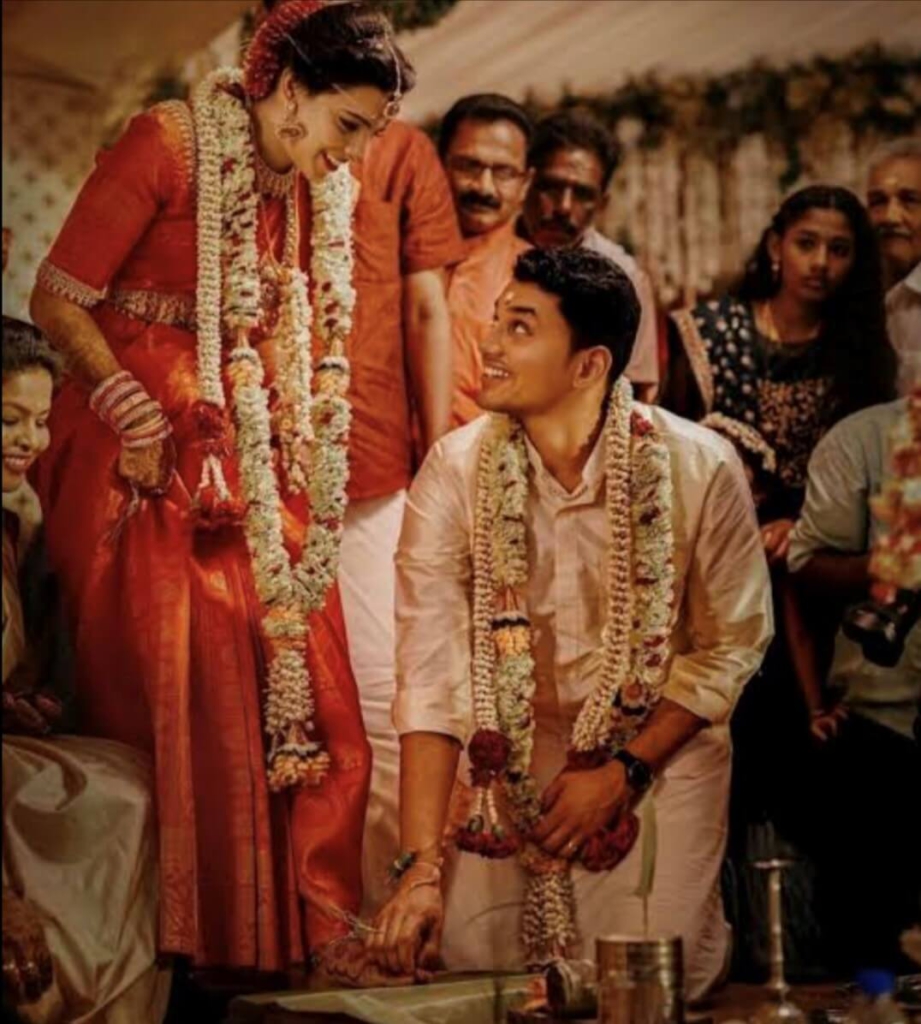
Image source: CamYogi
At the end of the Tamil wedding rituals, the bride and groom move seven times around the sacred fire and during this moment, the priest chants the holy seven vows. These vows are related to the promises of the bride and groom to each other in wedded life. After those seven sacred steps, the bride and groom become a husband and wife. The husband holds the toe of the left foot of his wife when she steps on the grindstone.
With the Saptpadi ritual, the Tamil wedding rituals come to an end but there is a lot more to know still about the rich Tamil culture through the post-wedding rituals.
Check this also Catholic Wedding Rituals
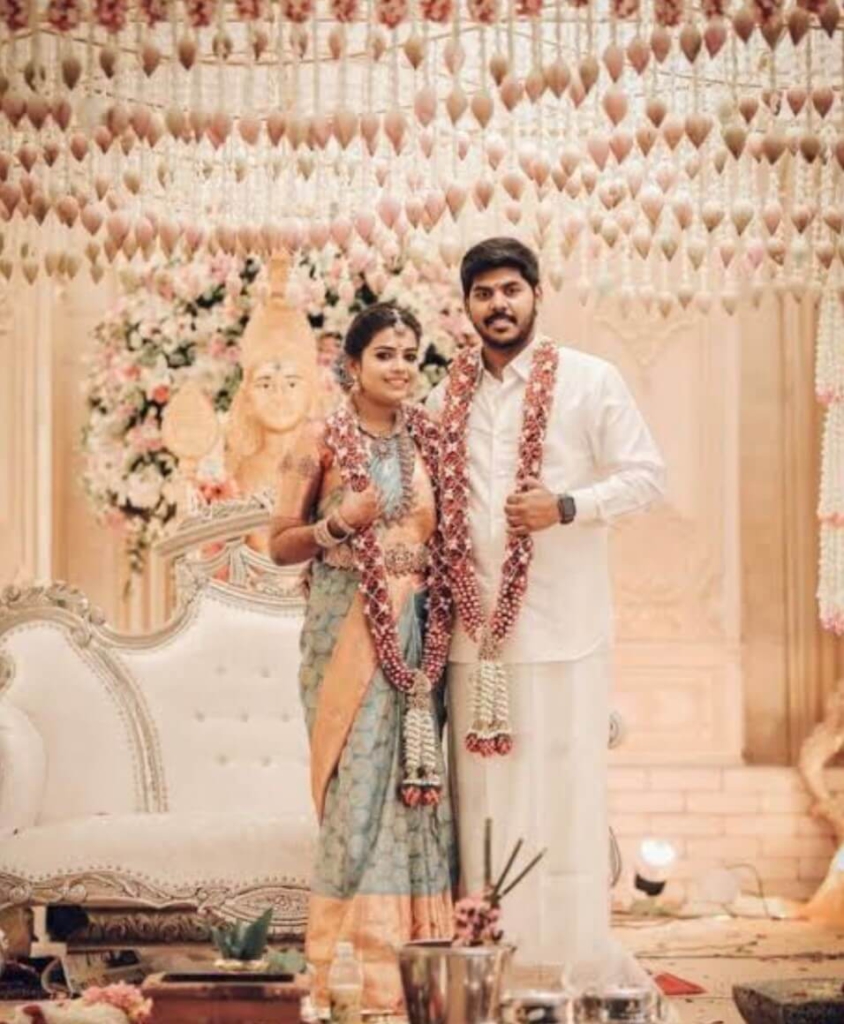
Image source: Pinterest
After performing all the pious wedding customs, the bride and groom sit on a throne chair, where all the guests come and bless them with gifts and dance to famous Tamil Wedding Songs. The guests are traditionally served authentic Tamilian vegetarian lunch. The couple greets every guest and seeks blessings for their married life.
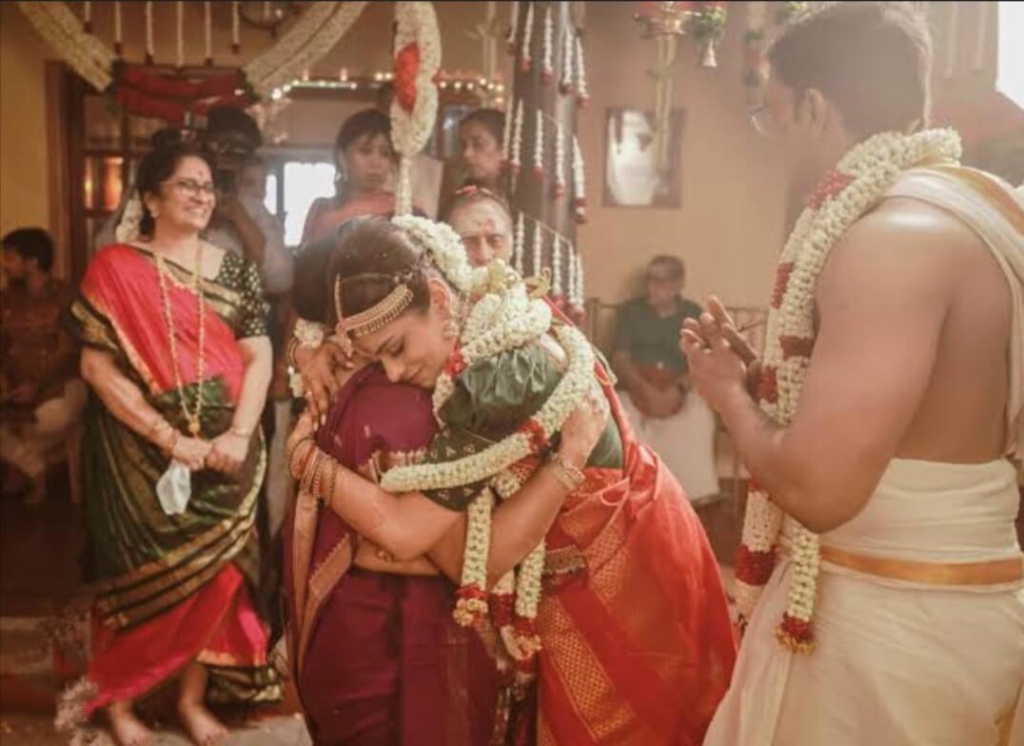
Image source: Weva Photography
Now it is the hour of leaving the paternal home for the beautiful Tamil bride and heading towards her new home – Her Husband’s home. She bids emotional adieu to her entire family, relatives and friends. During this emotional moment, both families exchange some gifts and offer cash and gifts to the bride as well. When the bride leaves her paternal home, all the family members and relatives present there, pray to their family deities for the couple’s wellbeing. Before leaving for her in-laws’ home the bride and his husband lie down to seek the blessings of elders. This reverence towards elders is called Paaladanam.
Check this also Odia wedding rituals
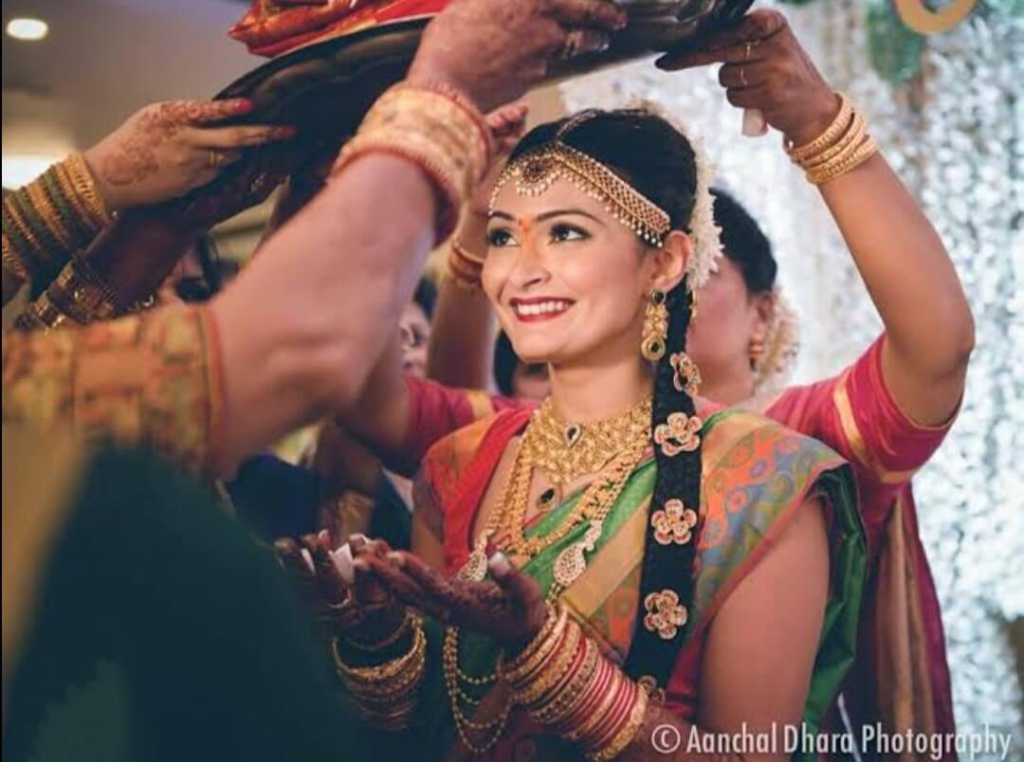
Image source: Anchal Dhara photography
Similar to the North Indian wedding culture, when the newlywed couple arrives home, the mother-in-law of the bride welcomes her wholeheartedly and performs a small aarti in front of the bride. Now the couple enters the home and visits the family’s deities’ place first and foremost.
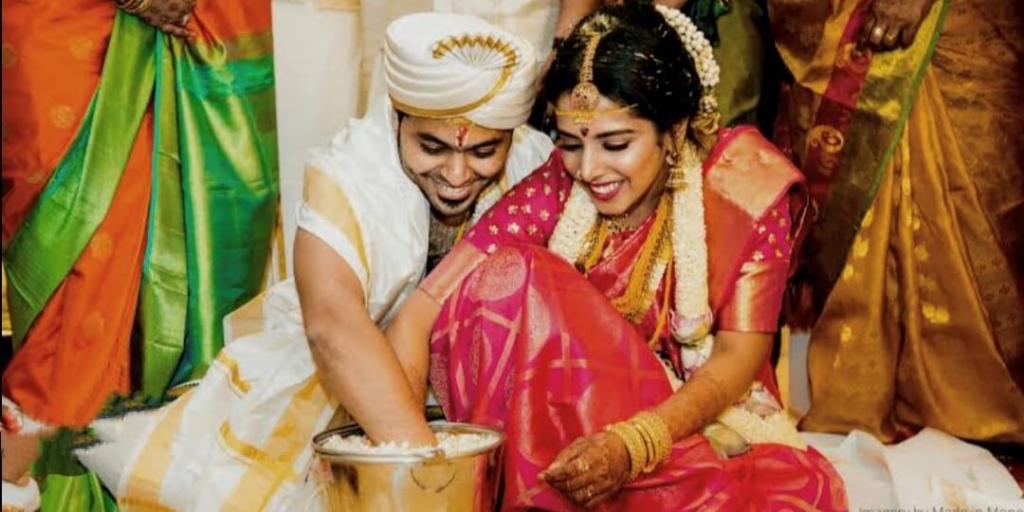
Image source: Wedding Wishlist
To make the relationship between bride and groom denser, several fun games as a post-wedding ritual are played between them. Along with these fun games, the sister of the groom offers some jewelry or gift to her newlywed sister-in-law. In many Tamil communities people call this ceremony Nalanga. This ritual is a great indication of the groom’s family’s efforts for socializing the environment for the new bride so that she can feel free and loved by all. The challenging games between husband and wife add giggles to the ambiance of the home.
Check this also Royal Rajput Wedding Rituals
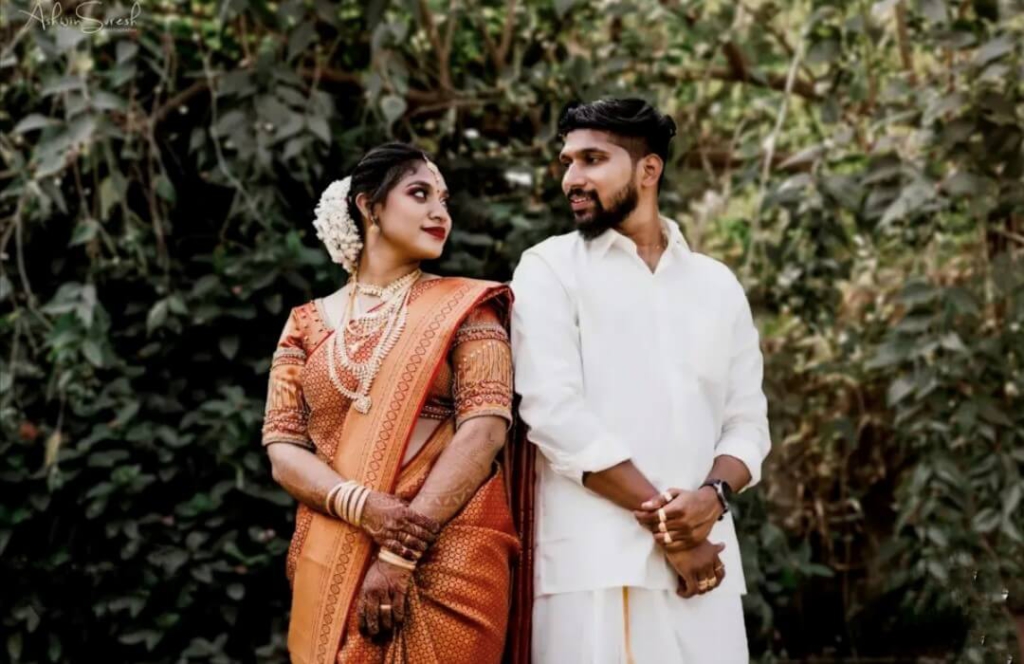
Image source: Wedding Wire
After three days of the wedding, the couple visits the paternal home of the bride. Both are warmly welcomed in the home and the family of the bride serves a delicious Tamil lunch to the couple. Close relatives and friends of the bride come to the home to greet the couple. In the end, the family offers some gifts like clothes, jewelry, and cash to the couple when they leave again for the bride’s in-laws’ home. It shows the daughter will always be loved, cared and welcomed.
Check this also Sindhi Wedding Rituals